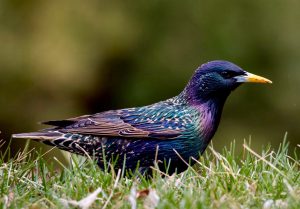 Photo ©
Franke de Jong
Photo ©
Franke de Jong
At first glance, it’s a black cloud, twisting and bending like some sort of gigantic dragon in the sky. Listen, and it sounds like the crashing of waves on a beach. What is it?
European Starlings move through the air like a school of fish moves through the sea, using scale-free correlation.
What does that mean?
Scale-free correlation is comparable to a game of telephone, in which one person gives a secret message to their neighbor, who whispers it to the next person, and so on. Humans aren’t the most talented communicators in the animal kingdom, so the message becomes distorted pretty quickly.
The word “murmur” usually doesn’t imply very clear communication. Humans murmur, mumble, and whisper when we want to guard a secret, like in a game of telephone.
However, a flock of European Starlings is called a murmuration, and European Starlings have evolved to be great communicators. In a big murmuration, each starling pays attention to seven of its neighbors at once! That way, hundreds of birds can respond to each other almost simultaneously.

Check out this video of a murmuration in action!
Since European Starlings are one of our focal species in the United States and Canada, you can help us research them!
~Brigid Lucey